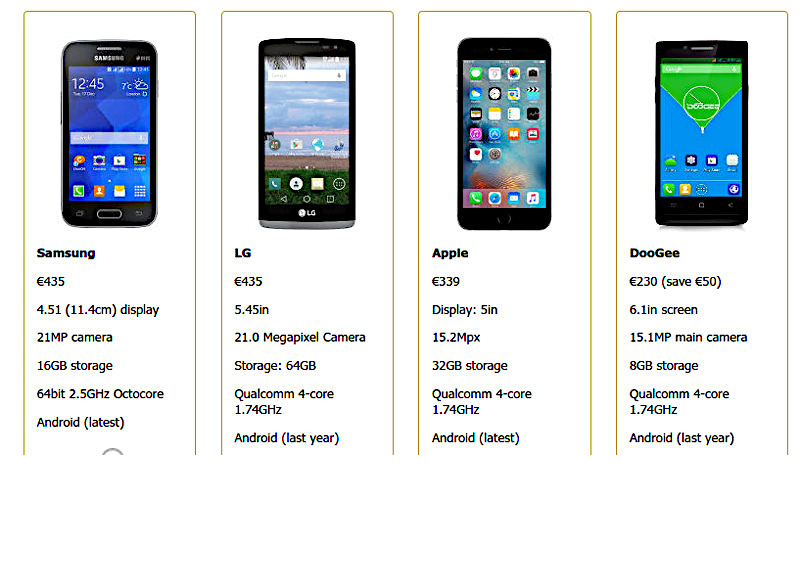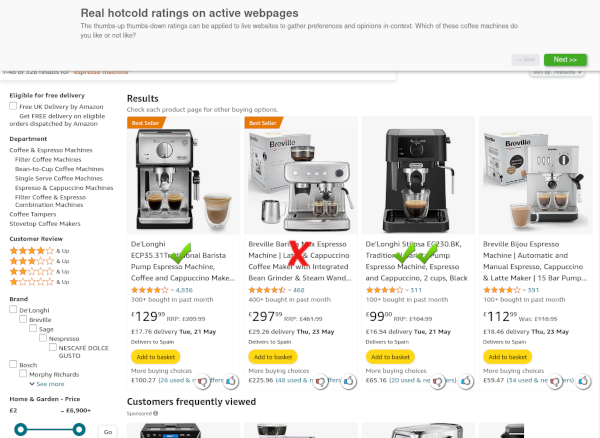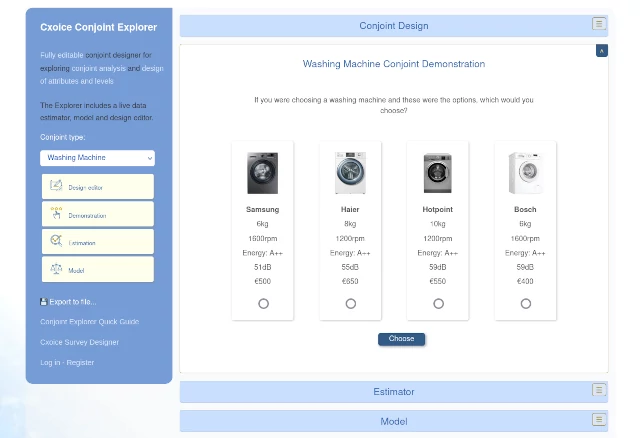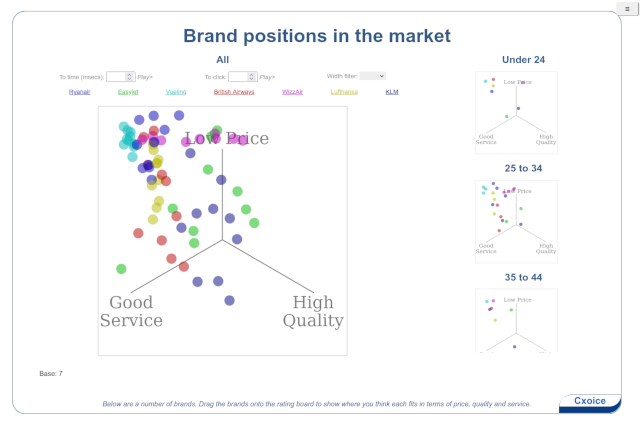Sharper marketing research
Business-focused strategic market research
Our consultants design and deliver in-depth market research to understand what value means to customers, their willingness to pay and how to define and reach your target audiences. We listen, then design the research to deliver clear, business-enhancing results focused on maximizing customer success.
Cxoice - our end-to-end research platform
Our research is built on our own Cxoice Insight Systems platform. Cxoice delivers research that is more engaging, more visual, more realistic and more relevant for your customers. Highlights include web-overlay surveys, video capture and automated analysis. Cxoice is the real-world insight system you need, with AI where you need it.
Conjoint analysis - measure customer values and trade-offs
Discover conjoint analysis with the Cxoice Conjoint Explorer
Customers know what they want when they see it but can't always say what they need - the say-do gap - so products and services need to be validated by reality. Our consultants are published experts on techniques like market segmentation, conjoint analysis, brand equity research, pricing research.
Master pricing strategies and willingness-to-pay
To understand what customers will pay, you need to understand what they really value. Our pricing research assesses how prices affect customer demand to build market models and forecasts around core willingness to pay, feature-value and price optimization points.
Research that keeps delivering answers
Market research is an on-going task. Periodic market sizing and segmentation define your market parameters. Purchase tracking measures your market share. Brand and advertising tracking check that your marketing is working and delivering value. Satisfaction measurement checks that your products and services are continuing to meet customer needs.
Our approach
Explore
Understand your business needs. Map out the market structures. Generate hypotheses. Work with your team
Experiment
Investigate and test customer opinions with tools like conjoint analysis or web-overlay surveys
Discover
Build market models and sales and revenue forecasts to identify sweet-spots and the most impactful messaging and communications.
Why work with us...
We have more than 25 years experience of working with blue-chip companies and start-ups to ESOMAR industry standards. Our experts are used to challenging business problems often involving leading-edge technical products and services where research is only part of the puzzle. Having our own survey platform we can solve even the most complex research challenges and marketing experiments.
Contact us at enquiries@dobney.com, or call +44(0)1633 226 950, or use our help and advice form.












